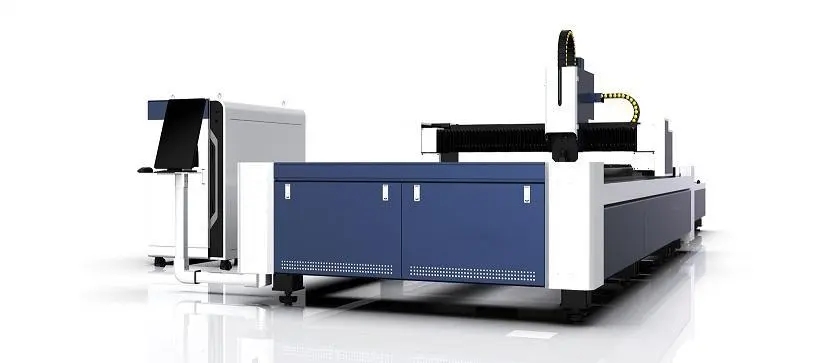Laser cutting technology is an advanced cutting tool that utilizes a high-power and high-density laser beam to irradiate the cut material, heat it to the vaporization temperature at high temperature, form holes, and then continuously move the laser beam to complete the cutting. This cutting method is a type of thermal cutting treatment. Laser cutting is efficient and environmentally friendly, with good cutting quality and fast speed, improving cutting efficiency and gradually replacing traditional tool cutting methods. However, there are also many factors that affect the quality of the material being cut during the laser cutting process.
The factors that affect the cutting quality of laser cutting machines include cutting speed, focal position, auxiliary gas, laser output power, and workpiece characteristics.
1. Laser output power
A laser cutting machine generates energy from a continuous wave output laser beam, and the size and mode selection of the laser power will have an impact on the cutting quality. In practical operation, it is usually adjusted to a higher power to meet the requirements of cutting thicker materials. At this point, the beam mode (the distribution of beam energy in the cross-section) becomes more important. Under conditions of less than high power, a higher power density is obtained at the focal point and better cutting quality is achieved. During the entire effective working life of the laser, the modes are not consistent. The condition of optical components, subtle changes in the gas mixture during laser operation, and flow fluctuations can all affect the mode mechanism.
2. Focus position adjustment
The relative position between the focus and the workpiece surface is particularly important for ensuring cutting quality. In most cases, the focus position during cutting is just on the surface of the workpiece, or slightly below the surface. Ensuring a constant relative position between the focus and the workpiece is an important condition for achieving stable cutting quality throughout the entire cutting process. When the focus is in a better position, the cutting seam is smaller and the efficiency is higher. A better cutting speed can achieve better cutting results. In most applications, the beam focus is adjusted to just below the nozzle. The distance between the nozzle and the surface of the workpiece is generally about 1.5mm.
3. Cutting speed
The cutting speed of the material is directly proportional to the laser power density, that is, increasing the power density can improve the cutting speed. The cutting speed is inversely proportional to the density (specific gravity) and thickness of the material being cut. When other parameters remain unchanged, the factors that increase cutting speed are: increasing power (within a certain range, such as 500-2 000W); Improve the beam mode (such as from high-order mode to low-order mode until TEM00); Reduce the size of the focusing spot (such as using a short focal length lens for focusing); Cutting materials with low initial evaporation energy (such as plastic, organic glass, etc.); Cutting low-density materials (such as white pine); Cut thin materials.
4. Auxiliary gas pressure
The use of laser cutting machines for cutting materials requires the use of auxiliary gases, and the magnitude of gas pressure is an extremely important factor. The auxiliary gas is coaxially sprayed with the laser beam to protect the lens from contamination and blow away the slag at the bottom of the cutting area. For non-metallic materials and some metallic materials, use compressed air or inert gas to treat melted and evaporated materials, while suppressing excessive combustion in the cutting area.
For most metal laser cutting machines, active gas (as long as it is O2) is used to form oxidation exothermic reaction with hot metal. This additional heat can increase the cutting speed by 1/3~1/2. When high-speed cutting thin materials, high gas pressure is required to prevent slag sticking on the back of the incision (hot slag sticking to the workpiece can also damage the cutting edge). When the material thickness increases or the cutting speed is slow, the gas pressure should be appropriately reduced. In order to prevent the plastic cutting edge from frosting, it is also better to cut at a lower gas pressure.





